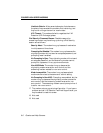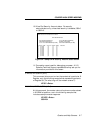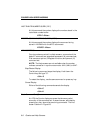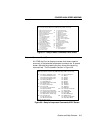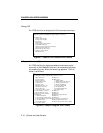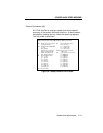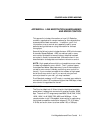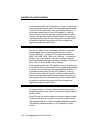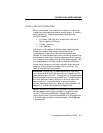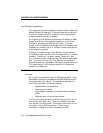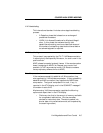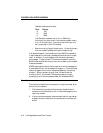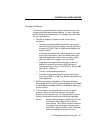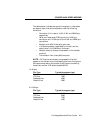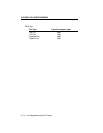
COURIER HIGH SPEED MODEMS
Link Negotiation and Error Control A-3
OTHER V. PROTOCOL OPERATIONS
Earlier, lower-speed V. protocols do not employ line probing.
Instead they use predefined answer tones to specify, or identify,
speed capabilities. These protocols define the following
maximum speeds.
• V.32 terbo: 19.2K bps, with an additional Courier-to-
Courier speed of 21.6K bps.
• V.32 bis: 14.4K bps.
• V.32: 9600 bps.
ASL (used in V.32 terbo and V.32 bis modes) is a strategy that
allows the modems' receivers and transmitters to act
independently of each other. We have always featured a
fallback/fall forward feature with error-correcting modems that
allows them to slow down if there are problems with the phone
line, in order to avoid data errors, and then speed up again. But
the independence of the receiving and transmitting channels
means that one channel or the other may slow down and then
speed up, without affecting the data flow on the other. The
result is more efficient line operation.
WARNING: Answering V.32 terbo modems shift their serial
port rate up to 38.4K (for 21.6K connections) if the calling V.32
terbo modem dials in at 21.6K. The answering V.32 terbo modem
then sends data to its computer at 38.4K bps. V.32 bis modems
shift their serial port rate to 19.2K bps in order to make 14.4K
bps connections. If your ocomputer or terminal does not
support these higher serial port rates, you need to disable V.32
terbo and/or V.32 bis. See Appendix B, Register S34.
NOTE: While many modems on the market now use the more
efficient speeds, there may be a problem in answering older,
"dumb" V.32 modems at 9600 bps. Register S28 is used to
modify the duration of the extra tones used in V.32 negotiations,
in the rare instance that this may be necessary. See S-Registers,
in Appendix B.



